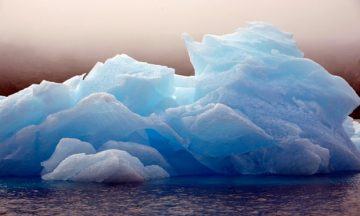Nina Allan in The Guardian:
 I’d never heard the word before. Stillicide,” a corporate executive named Steven thinks to himself around a third of the way through Cynan Jones’s fragmented, marvellously compressed novel of the same title. “Water falling in drops. I challenge myself to get it into a sentence for the [journalists].” I had not heard the word before either, though Jones helpfully opens with a dictionary definition. And it is this image of dripping water and its powers of erosion that comes to define his book as a whole, both as a novel that confronts the challenge of describing what climate crisis might look like, and in the way a slow accretion of pertinent detail gathers cataclysmic momentum.
I’d never heard the word before. Stillicide,” a corporate executive named Steven thinks to himself around a third of the way through Cynan Jones’s fragmented, marvellously compressed novel of the same title. “Water falling in drops. I challenge myself to get it into a sentence for the [journalists].” I had not heard the word before either, though Jones helpfully opens with a dictionary definition. And it is this image of dripping water and its powers of erosion that comes to define his book as a whole, both as a novel that confronts the challenge of describing what climate crisis might look like, and in the way a slow accretion of pertinent detail gathers cataclysmic momentum.
Stillicide takes place in the near future, when phases of extreme weather have plunged Britain into an alternating cycle of flood and drought. As temperatures continue to rise, smaller rural communities are becoming unsustainable, while the logistics of feeding and watering the growing city population has come to dominate the economic agenda. Steven is a PR spokesman for the corporation in charge of supplying an unnamed city with potable water. Previous attempts to augment the overstretched supply – an overground pipeline, an armoured freight train – have become the focus of terrorist activity, with raiding parties from the countryside violently advancing the demands of those who live beyond the urban centres. A new plan is hatched: an iceberg is to be towed from the Arctic and brought to an “ice dock” where its abundance of pure drinking water can be tapped and distributed. It is hoped that the iceberg will be largely immune from attacks by vigilantes and climate protestors. Moreover, meltwater from the berg – stillicide – can be utilised to irrigate agricultural land throughout the duration of its passage.
More here.
